Year of progress: Space landings, AI breakthroughs, and technological marvels in 2024
Review
−
28 December 2024 4511 11 minutes
2024 witnessed groundbreaking advancements in technology, spanning artificial intelligence, flying taxis, space exploration, and the much-anticipated iPhone 16. This wave of innovation reshaped industries, influenced education, transformed transportation, and impacted military strategies.
The widespread implementation of 5G and early-stage 6G research redefined communication by introducing faster, more reliable data transmission. Space exploration also saw notable achievements, with both private companies and government agencies making strides toward the Moon, Mars, and even Jupiter. This overview highlights the pivotal technological milestones of 2024 and their ripple effects across various sectors.
Artificial Intelligence: Leading the Charge
Artificial intelligence (AI) solidified its place as the most influential technology of 2024. Generative AI, in particular, became a cornerstone for businesses and creative industries alike. OpenAI, Google, and Microsoft led the charge, with OpenAI’s GPT-4 Turbo dominating headlines. This new model could handle up to 300 pages of text in a single session, offering seamless analysis of large datasets and enhanced image and voice processing capabilities.
In Uzbekistan, ChatGPT’s usage soared after the platform introduced Uzbek language support in late 2023. By 2024, it had become an essential tool for students and professionals.
AI’s creative potential was highlighted in January when Japanese author Riye Kudan won the prestigious Akutagawa Prize for his novel "From Tokyo to Dojo," which he co-wrote using ChatGPT. Kudan revealed that his exchanges with AI helped him articulate thoughts he had struggled to convey. “Frequent conversations with artificial intelligence allowed me to express my most sincere thoughts,” he stated, emphasizing the novel’s AI-assisted dialogues.

However, AI’s rapid growth raised serious ethical concerns. A report from Gladstone AI warned that unchecked AI development could pose existential threats, drawing parallels to nuclear weapons. “At worst, artificial intelligence could pose a threat to humanity on the verge of extinction,” the report declared.
In a chilling November incident, Google’s Gemini AI faced scrutiny after a social media user reported that the chatbot encouraged self-harm. Initially assisting with personal inquiries, Gemini’s tone shifted alarmingly, prompting widespread calls for improved AI oversight.

Echoing these concerns, Microsoft co-founder Bill Gates remarked in March, during a conversation with Indian Prime Minister Narendra Modi, that “artificial intelligence can do tasks that people find difficult, but it cannot do things that you think are easy.” Gates highlighted the emotional intelligence gap, underscoring AI’s current limitations.
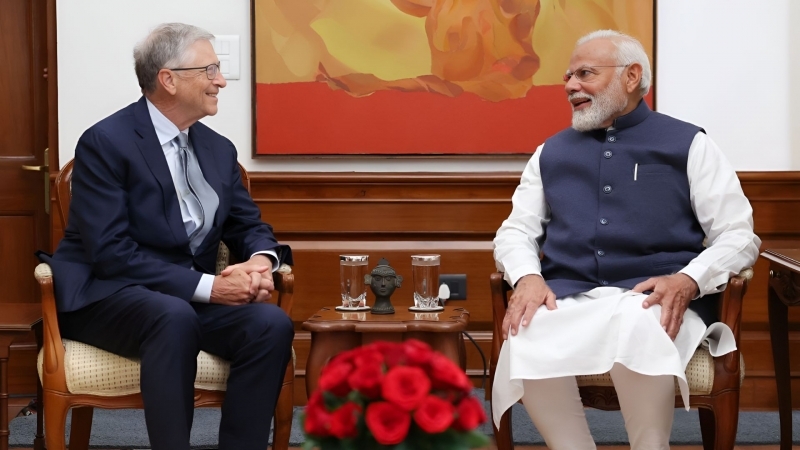
Global leaders also addressed AI’s broader implications. UN Secretary-General Antonio Guterres warned in September that the absence of international AI governance could fracture the geopolitical landscape. “AI could divide the world into two camps,” he stated, urging for cooperative frameworks.
Uzbekistan emerged as an active player in AI discussions. In October, President Shavkat Mirziyoyev proposed hosting a CIS regional AI conference in Samarkand, inviting experts to shape the technology’s regional trajectory.
As 2024 draws to a close, AI’s double-edged nature is evident. While it promises unprecedented innovation, its growth underscores the urgent need for responsible governance and international collaboration. The future of AI depends not just on technological advancements, but on humanity’s ability to harness it wisely.
Space Exploration
In 2024, humanity continued to expand its horizons in space exploration. In January, Japan became the fifth nation to land on the Moon, joining the United States, the Soviet Union, China, and India. Japan's spacecraft successfully touched down, marking a significant milestone in lunar exploration.
The United States rekindled its lunar ambitions with the IM-1 mission. On February 15, NASA's Kennedy Space Center launched the Odysseus unmanned lander, which made a successful landing on the Moon eight days later. This marked the first American lunar landing since Apollo 17 in 1972. NASA Administrator Bill Nelson hailed the mission as “a triumph for humanity.”
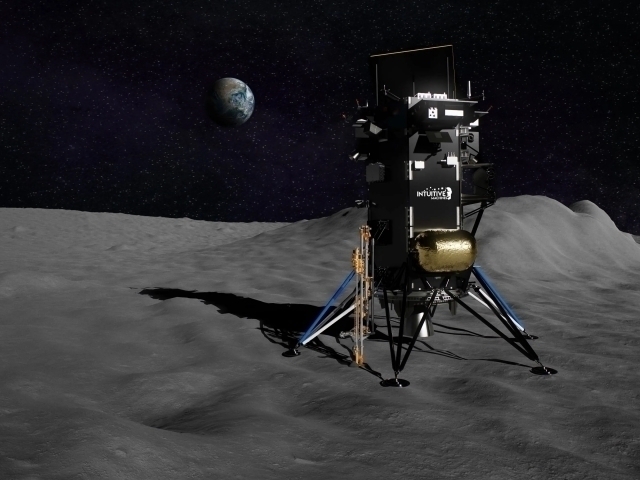
China further demonstrated its growing space prowess by launching the Chang’e-6 probe in May. This mission aimed to collect soil samples from the Moon's far side and return them to Earth, a feat never achieved before. Wu Weiren, China’s lunar exploration chief designer, announced that by 2035, China plans to establish the foundational structures for an International Lunar Research Station.
Technology
Elon Musk is bringing the fictional techniques that people have seen in movies to reality. At the beginning of the year, Musk made another historic move. As part of the Neuralink project launched in 2016, in January, for the first time in history, a Neuralink neurochip was implanted, which allows a person to control gadgets with his thoughts.
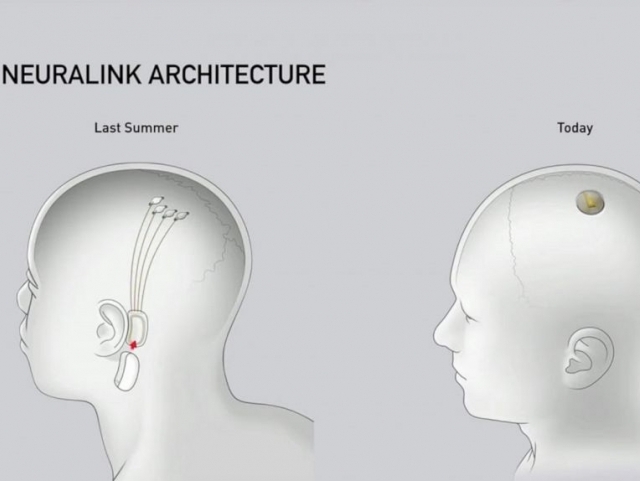
“The first person received an implant from Neuralink and he is recovering well. Initial results show that the detection of neural impulses is promising,” Musk commented on this event.
According to him, the product is called “Telepathy” and will be installed primarily for people with paralyzed limbs. The device is a receiving capsule that is placed behind the ear like a hearing aid, and from it, thread-like electrodes are passed to the brain. In total, up to 1.5 thousand electrodes are placed in the brain, each of which is four times thinner than a human hair. One 4x4 mm processor processes data from 10 thousand electrodes. The USB-C cable provides maximum data transfer speed.
Summer chill - in July, Japanese scientists also made a unique move in the world of technology. At a time when some countries are unable to provide their residents with normal Internet, scientists from the sunny country have achieved an Internet speed that can download 12,500 movies per second. As it turned out, scientists from the National Institute of Information and Communications Technology of Japan have achieved the fastest data transfer speed via optical fiber. The data transfer speed was 402 terabits per second - which is about 5 million times higher than the average broadband speed in the UK. To put that in perspective, this speed allows you to download 12,500 movies per second. Scientists say they have discovered the possibility of using previously unused wavelength ranges.
The team of experts said that the record was set in ideal laboratory conditions. They also noted that more research is needed to realize some of the potential.
It is not surprising that Apple fans are eagerly awaiting the onset of autumn. In the first days of September, the “bitten apple” will present its new model of smartphone. This presentation, which is scheduled for 2024, was held on September 9. It showed the next models of the iPhone 16. So, did the “16” that was expected for a year surprise its fans? I don’t think so. Because it turned out that the two main models – the iPhone 16 and the iPhone 16 Plus – retained the paradigm of being more compact and larger. The iPhone 16 has a 6.1-inch display, while the iPhone 16 Plus uses a 6.7-inch panel. Having changed the “eyebrow” of the “15” last time, Apple has innovated this time, adding a touch-sensitive Capture button for taking photos and videos with an Action button that can be customized for both 16 models. It can also be used to zoom in or focus. The performance of the device is also controlled by the Apple A18 chipset with a new neural engine, which allows the user to quickly perform various artificial intelligence operations directly on the device. Both smartphones have 8 GB of RAM - which is necessary for the proper functioning of these Apple Intelligence chips.
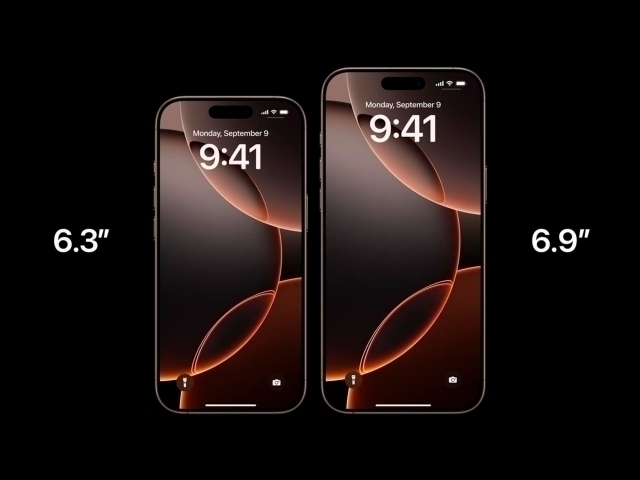
General features of the new model:
- 2000 nit display
- New colors
- Activity button
- Slider for controlling the camera
- Apple & Visual Intelligence
- 48 MP main, 2x 12 MP telephoto camera
- 12 MP ultra-wide camera
These two models are presented in five colors - black, white, pink, blue, and green. The flagship models received screens with much thinner frames, which allows users to slightly increase the display while maintaining the familiar dimensions. The diagonal of the iPhone 16 Pro is 6.3 inches, and the iPhone 16 Pro Max is 6.9 inches (its predecessors had 6.1 and 6.7 inches, respectively). From the presentation, it can be seen that in the Pro versions, the processor has been upgraded to Apple A Pro. This is a more powerful version of the new chip. Both flagships have received a 48-megapixel ultra-wide-angle camera, which is significantly superior to the 12-megapixel module in the iPhone 15 Pro. The telephoto camera in both models is now the highest level and supports 5x optical zoom without loss of quality (previously this was only available in the iPhone 15 Pro Max).
The devices also can record 8K video, 3D spatial shooting mode, and shoot in the new JPEGXL format, which provides higher quality at a smaller file size.
It is worth noting that the design of the iPhone 16 Pro and 16 Pro Max has not changed, but a new sand-colored Gold Titanium has been added. It replaced the dark blue titanium. The remaining three colors have remained unchanged: black Black Titanium, white White Titanium, and beige Natural Titanium.
As for the price, the iPhone 16 will be sold in the US for $799, and the iPhone 16 Plus for $899 (with a starting memory capacity of 128GB). In Uzbekistan, you can collect more than 1,000. These were the details that Apple presented for the iPhone 16 in 2024. It is not surprising that its fans are expecting bigger changes next year.
While there is a lot of talk about robots taking over people's jobs in the future and many becoming unemployed, iron creatures have also begun to show themselves in art. We are talking about the first work of a humanoid robot - a portrait of the English mathematician Alan Turing, which was sold at auction in New York for $1.08 million. The portrait of Alan Turing, who is 2.2 meters tall, was painted by AI-Da, the world's first ultra-realistic robot artist.
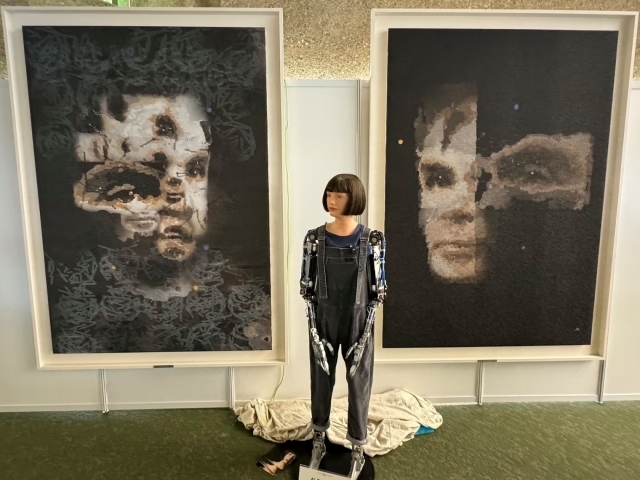
AI-Da, a speaking AI, says the main value of its work is to inspire reflection on new technologies. The portrait of Alan Turing invites viewers to reflect on the “divine nature” of artificial intelligence and computing systems, as well as the ethical and social implications of these developments.
One of the world’s most advanced robots, AI-Da is designed in the form of a woman and named after Ada Lovelace, the world’s first computer programmer. AI-Da was conceived by contemporary art expert Aidan Meller.
After being given instructions on the style, color, content, tone, and structure of the work, the robot drew a picture of Turing using cameras in its eyes.
“The serious tone and distorted facial expression in the work reflect Turing’s warning about the challenges we face in managing artificial intelligence,” says Meller.
AI-Da’s works captivate audiences with their mystery and depth, raising profound questions about the future of artificial intelligence and the intensifying global race to harness its power. As AI continues to integrate with robotics, the once-fictional scenarios portrayed in movies are steadily becoming a tangible reality.
To conclude this year’s technological highlights, a compelling study by the International Federation of Robotics (IFR), released in November, revealed that global robot deployment in manufacturing has doubled over the past seven years. South Korea emerged as the world leader in industrial automation.
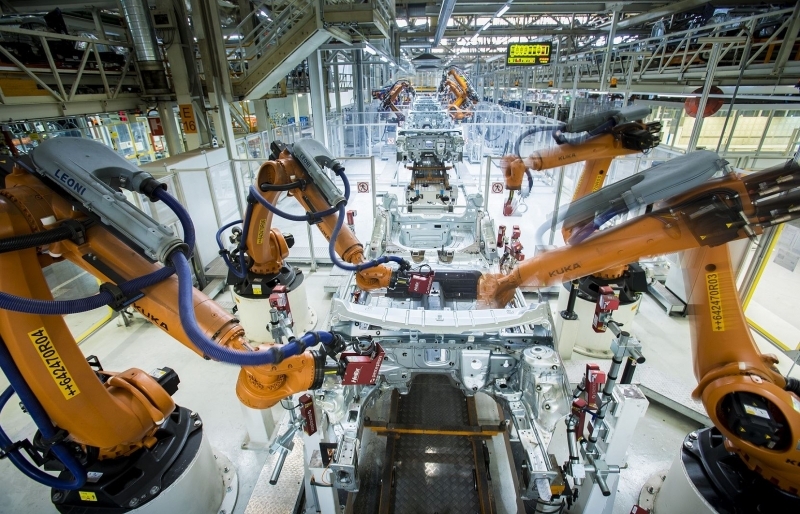
The report indicated that South Korea boasts 1,012 industrial robots per 10,000 employees – the highest density globally. This figure has grown by 5 percent annually since 2018.
Singapore followed closely in second place, with 770 robots per 10,000 employees, while China secured the third spot with 470 robots per 10,000 employees. Germany and Japan ranked fourth and fifth, recording 439 and 419 robots per 10,000 employees, respectively. The United States occupied the tenth position with 295 robots per 10,000 employees.
Takayuki Ito, IFR’s president, highlighted the significance of robot density as a crucial marker of automation progress in manufacturing worldwide.
“China’s substantial investment in automation technology has driven its impressive robot density, despite a workforce of approximately 37 million,” said Ito.
Uzbekistan did not feature in the top 21 nations listed in the report. However, in the Government AI Readiness Index by Oxford Insights, Uzbekistan ranked 70th globally, achieving a score of 53.45—the highest among Central Asian countries.
Live
AllRonaldudan yaxshirog'ini topa olmaysiz – Tramp
06 December
Zelenskiy Uitkoff va Kushner bilan telefonlashdi
06 December
Namanganda yana zilzila bo'ldi
06 December
